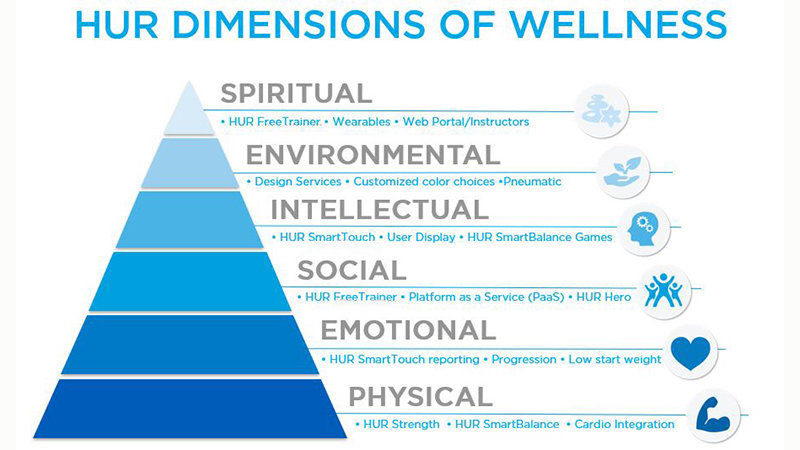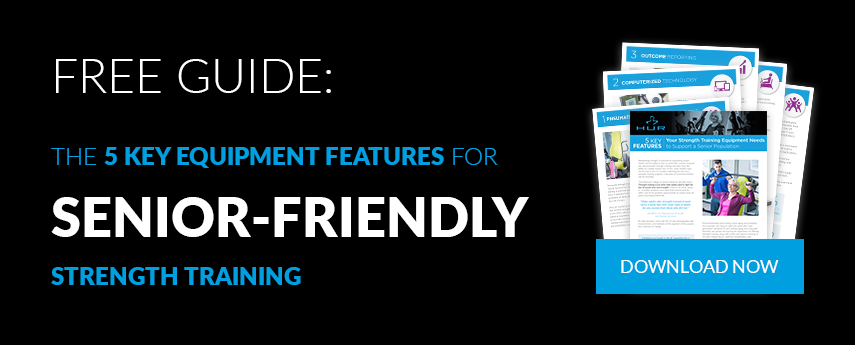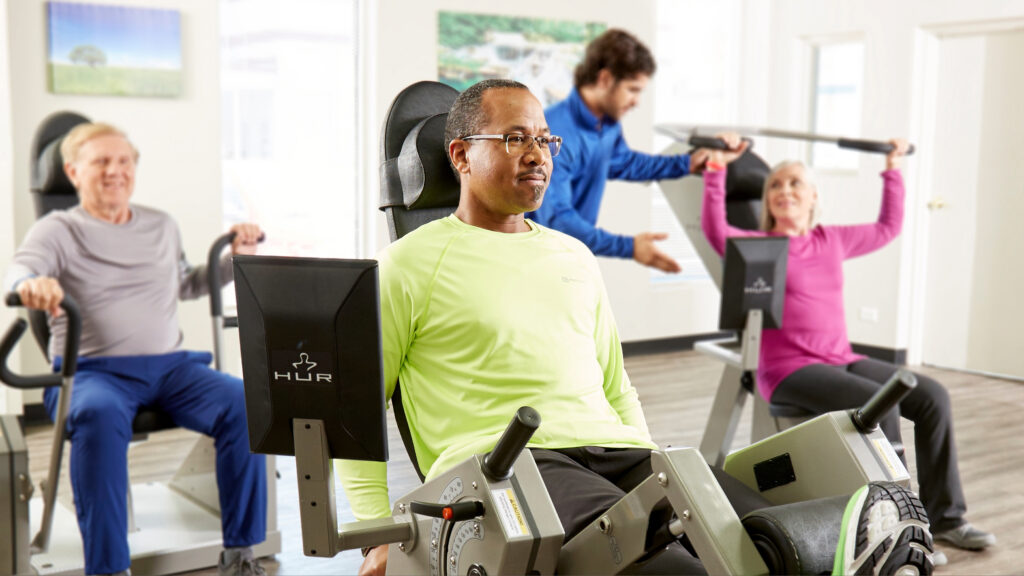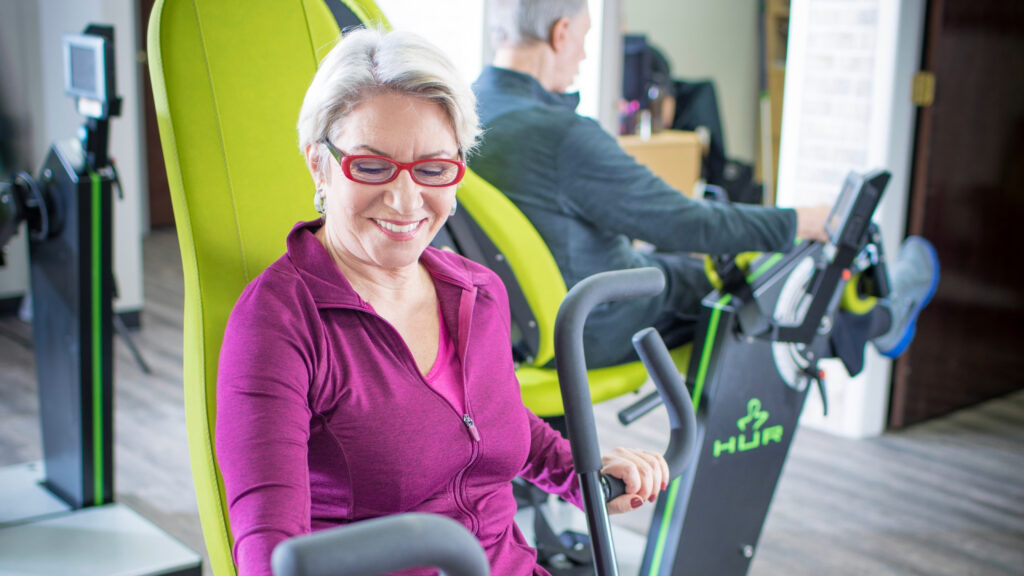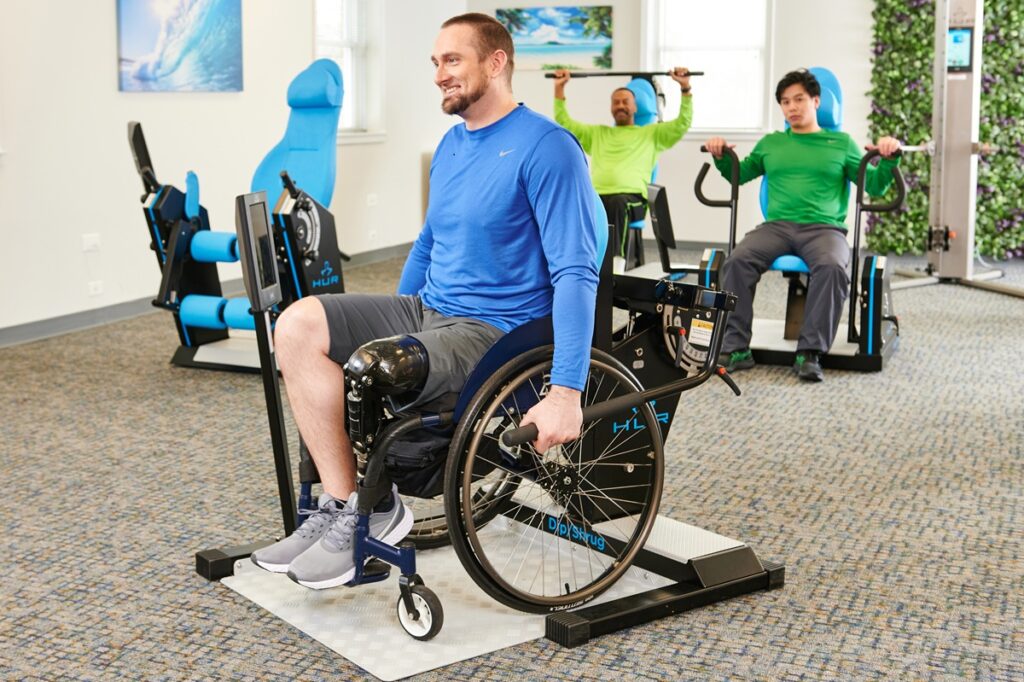Physical Health is the Foundation for Whole-Person Wellness
The 6 Dimensions of Wellness is a model for healthy aging based on an integrated, whole-person approach to living longer, healthier lives. The model begins with the belief that physical health is foundational whole-person health and cannot be separated from lifestyle choices and differences in mental, emotional, social, and spiritual needs and desires.
The 6 dimensions of wellness offer a clear path towards healthy aging because it recognizes that building and maintaining physical health is not an end unto itself. Physical health is foundational to meeting our emotional, social, intellectual, environmental, and spiritual needs. As such, any successful wellness program must approach physical health from the perspective that it is the foundation for whole-person wellness.
The 6 Dimensions of Wellness and The HUR Standard of Care
Every piece of equipment we produce, every wellness team we work with, every senior living and rehabilitation center we support – everything we do at HUR comes down to one founding principle: Personal physical health is about the whole person.
Yes, we manufacture strength training equipment that’s specifically engineered to support the physical health of older adults. But, physical health doesn’t happen in isolation. For most seniors, the reasons for pursuing physical health have more to do with their emotional, social, intellectual, environmental, and spiritual needs than a strict desire for physical health.
Let’s take a closer look at how the dimensions of wellness work together to support seniors and senior living centers, and why physical health is foundational to whole-person wellness.
Emotional.
When people know they are strong enough to participate in activities that are important to them, they have the confidence to pursue life’s passions at any age.
Emotional health is largely dependent on the ability to feel positive and enthusiastic about ones’ life. For many seniors, this means having the opportunity to pursue interests and activities that they enjoy and that contribute meaning and purpose to their life. When seniors can’t get out, interact with their community and do things they enjoy, emotional well-being can suffer to the point of creating further physical decline.
The most effective strategy for supporting emotional wellbeing is, of course, to prevent physical declines in the first place. And, prevention begins with an exercise program that includes cardio, balance, and strength training.
Social.
When people are strong and confidently engaged in passionate pursuits, they can engage in healthy relationships and social experiences.
For many seniors, the ability to create and maintain strong social ties is vital to their overall life satisfaction and a primary reason for choosing to live in a senior living community.
An Activities Director at a Senior Living Community in Texas recently spoke with us about how vital physical health is to residents’ ability to maintain a connection to others in the community.
“When a resident isn’t physically well, it’s easy for them to become isolated in their room, and that’s where the decline happens. One of the main reasons our residents choose to be here is for the social connection, and physical limitations restrict their ability to be social. The isolation that comes from not being able to participate in activities and get out and about in the community, leads to feelings of loneliness and depression. This emotional state can cause them to become more sedentary, causing further physical decline. It’s a vicious cycle. My goal is to do everything I can to prevent the decline in the first place, and that means a heavy focus on their physical health. I am convinced that physical health directly supports their emotional well-being largely because it allows them to be socially active within the community.”
Intellectual.
Studies have shown that increased muscle strength, the ability to pursue personal interests, and maintain fulfilling social relationships all have a positive impact on cognitive functioning.
By late middle age, most people have developed age-related lesions in our brains’ white matter. For most of us, the lesions cause no symptoms and go completely undetected, and yet, brain scans reveal their existence. As we get older, the lesions can widen and multiply, affecting our ability to think clearly.
We know that declines in mental agility are associated with age. In fact, most of us treat age related deterioration in cognitive functioning as an inevitable fact of life. We say things like, “I can’t believe I forgot that. I must be getting old.” However, what many people don’t know is that exercise can stop, or even reverse, cognitive declines. Furthermore, several studies indicate that resistance training might have a greater impact on cognitive functioning than aerobic exercise.
So, exercise and physical health has a direct impact on cognitive functioning. Likewise, cognitive functioning has a direct impact on physical health. Losses in memory and cognition can cause dangerous situations. Leaving the stove on, feeling confused while driving, forgetting to take medication or accidentally taking too much – all of these are situations that threaten the overall health and wellbeing of our seniors.
Environmental.
Our physical environment has a profound effect on our overall well-being and can either support or detract from physical, emotional, social, and intellectual health.
Our personal environment – the spaces in which we live, work, and play – has a profound effect on our mental, emotional, and physical well-being. This is probably even more true for older adults. Research shows that our immediate environment has a direct link to our mood, motivation, creativity, and stress level.
But, we don’t need research to tell us that, do we? Picture yourself sitting in a crowded, chaotic, noisy office. Then picture yourself relaxing on a beach, white sand stretching for miles, the sun coloring the sky with shades of red and pink and orange, a gentle breeze blowing through your hair while the waves lap at your feet. We don’t need research to tell us that one scenario will produce vastly different mental and emotional responses than the other.
As we age, our ability to handle chaotic environments diminishes. Losses in hearing, eyesight, and balance, and an increased desire towards structure and routine are just a few of the reasons why. Furthermore, we tend to be much more risk-averse as we age and may even experience fear at the idea of trying new things.
All of these factors can keep seniors out of the gym. Noisy facilities with intimidating equipment and intimidating people are reasons enough for many older adults to think the gym isn’t for them. In contrast, clean, well-lit fitness centers that offer a quiet atmosphere, non-intimidating equipment, and a clearly defined program can not only support the physical health of seniors, but also meet emotional, social, and even spiritual needs.
Spiritual.
When people have the physical and emotional stamina, social support, intellectual capacity, and environmental opportunity to act on personal beliefs, they are more likely to feel that they are living a purposeful life.
At our core, us humans are meaning makers and purpose seekers. This does not stop just because we’ve retired or reached some arbitrary number associated with the label of “senior citizen”.
Our need for meaning and purpose is universal and inexhaustible. For many seniors, spiritual health means feeling connected to someone or something beyond oneself. It means volunteering at the local school or animal shelter. It means long intellectual and philosophical discussions over dinners with friends. It means supporting family members in meaningful ways that enrich their lives. It means knowing that they are still contributing to the world in ways that matter.
And, while it certainly can be argued that meaning exists beyond physical health and well-being, it’s easy to see how physical health is directly connected to many activities that seniors pursue because of spiritual needs. For many seniors, the desire to purse activities that bring purpose and meaning to their lives is the primary driver for maintaining physical health.
Furthermore, many seniors view activities that support physical health as spiritual practices. The act of eating nutritious food is a meditation in gratitude and self-care. Practicing Thai chi or yoga is a practice of bringing the mind and body into submission while letting go of anything outside the present moment. Strength training, swimming laps, or taking a long walk are exercises in self-control and feeling alive.
